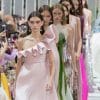
Pierre Bergé
“Marrakech taught me color,” said Yves Saint Laurent, who bought a cobalt blue villa in the Moroccan city and made it his vacation home in 1966. “Before Marrakech, everything was black.”
This can be seen in the sprawling collection of couture, accessories, sketches and photographs on display at the Musée Yves Saint Laurent in Marrakech, which opens to the public on Thursday.
The museum shows creative masterpieces that span the late designer’s 40-year career, from 1962 until his retirement in 2002. (He passed away six years later, in 2008.) Next door to the Majorelle Garden and steps away from his private villa, roughly 1,000 items from Saint Laurent’s studio are on view at the $17 million terra cotta museum designed by Studio KO architects. A project of Fondation Pierre Bergé – Yves Saint Laurent, it was spearheaded by Pierre Bergé, Saint Laurent’s business partner and former romantic partner, who passed away last month, on September 8. However, he was able to visit the museum before it opened to see his vision completed.

The designer and Pierre Bergé, who first came to Marrakesh on holiday in 1966.
Pierre Bergé
The idea came about in 2010, when a Saint Laurent-themed exhibition was hosted at Marrakech’s Berber Museum. “It was such a success, it made sense to build a museum,” reveals Björn Dahlström, the director of Musée Yves Saint Laurent. “When this piece of land went on sale, Pierre Bergé bought it.”
The museum starts out with the iconic Mondrian collection from 1965, the cocktail dresses printed with the abstract paintings of French artist Piet Mondrian. “It questions Saint Laurent’s status; is he an artist, a fashion designer?” asks Dahlström. “It ties into the whole idea of a fashion designer being the main subject of a museum.”
This museum is not alone. A new Musée Yves Saint Laurent Paris opened the doors to the designer’s French atelier last week. “The two museums show Saint Laurent’s duality; his dark and colorful pieces, that he is both classical and baroque, the minimal line but also the Arabesque,” explains Dahlström. “He is both Marrakech and Paris.”
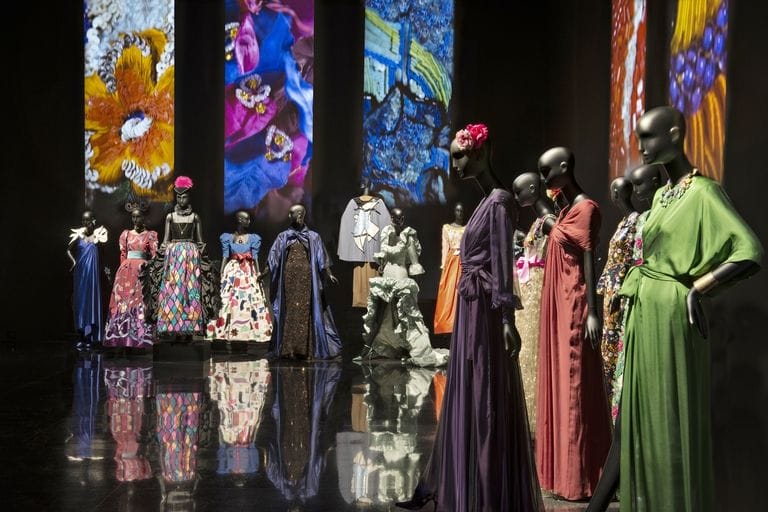
Nicolas Mathéus

Nicolas Mathéus
Dahlström thinks Saint Laurent was an artist. “Pierre Bergé used to say ‘Fashion is not an art, but you need an artist to make fashion,’” he said. “It’s quite relevant when talking about Yves Saint Laurent.”
Indeed, there are dresses inspired by Pablo Picasso and a hand-embroidered jacket inspired by a Vincent Van Gogh painting, the most expensive jacket in fashion for its time in 1988 (it sold for 500,000 French Francs, about $900,000 today). “Everything is linked to art,” notes Dahlström.
The museum captures his adventurous career, from his first LIFE magazine cover to his last runway show in 2008. It begins in 1957, when he succeeded Christian Dior at the Maison Dior in Paris, to 1961, when he founded his own fashion house at the age of 25. “Ambition, ambition, ambition—from the beginning,” once said his longtime friend Fernando Sanchez, while Karl Lagerfeld remembered Saint Laurent, at this time, as “full of life, full of sparkle.”
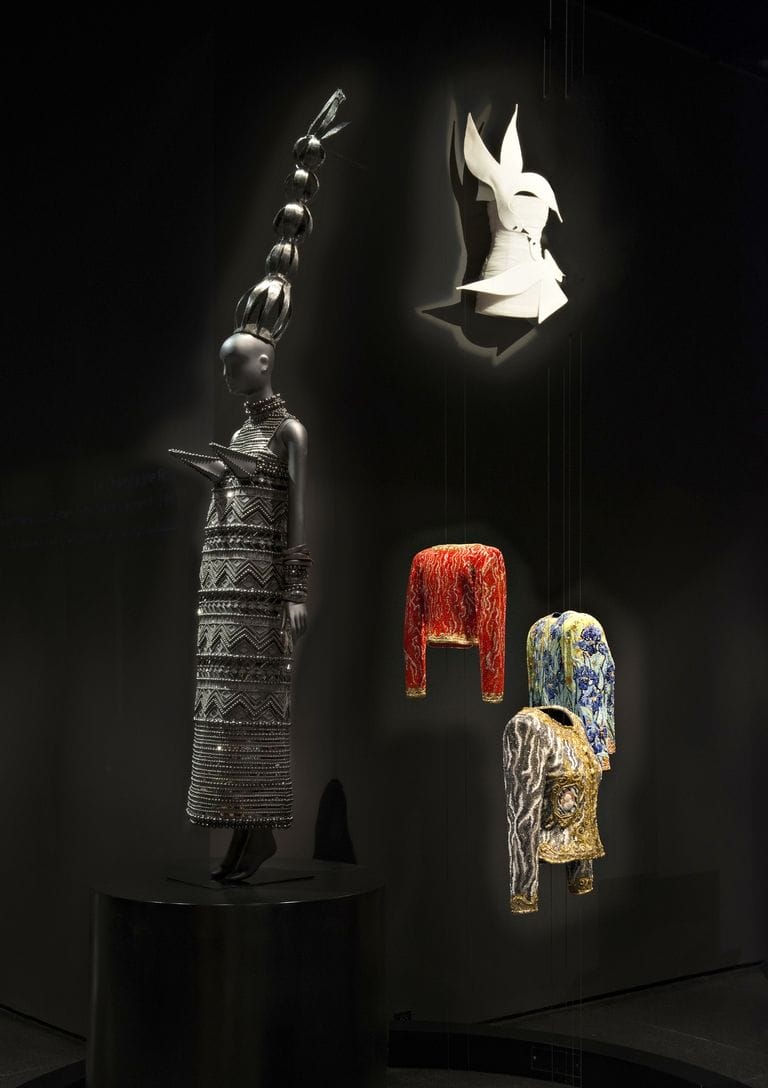
Nicolas Mathéus
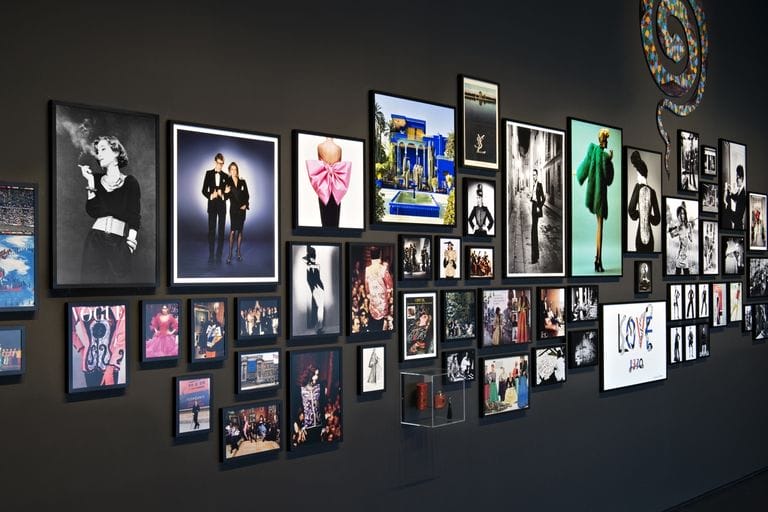
Nicolas Mathéus
Portraits of the artist grace the gallery’s dramatically-lit black walls, one showing the designer in a melancholic slouch by Andy Warhol in 1974, another being a nude by Jeanloup Sieff to advertise his first fragrance, Opium, in 1977.
What makes this museum special is the rainbow of fabric on display, after Saint Laurent discovered Marrakech. “When you look at his collection before 1966, you see a lot of black, but after, you see a blooming of color,” said Dahlström.
There are pre-Marrakech pieces like his iconic smoking suit, the tuxedo two-piece which revolutionized androgynous sex appeal for women. It was so controversial, hotels and restaurants wouldn’t allow female guests to wear it, but it became a classic in 1975 when it was photographed by Helmut Newton for French Vogue.
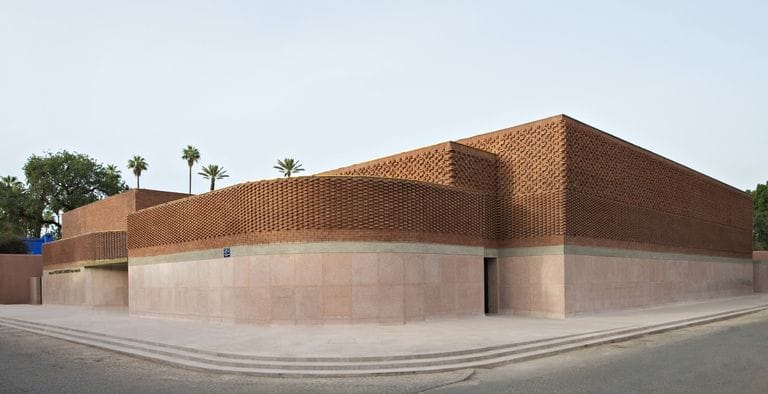
The terra cotta museum was designed by Studio KO architects.
Nicolas Mathéus
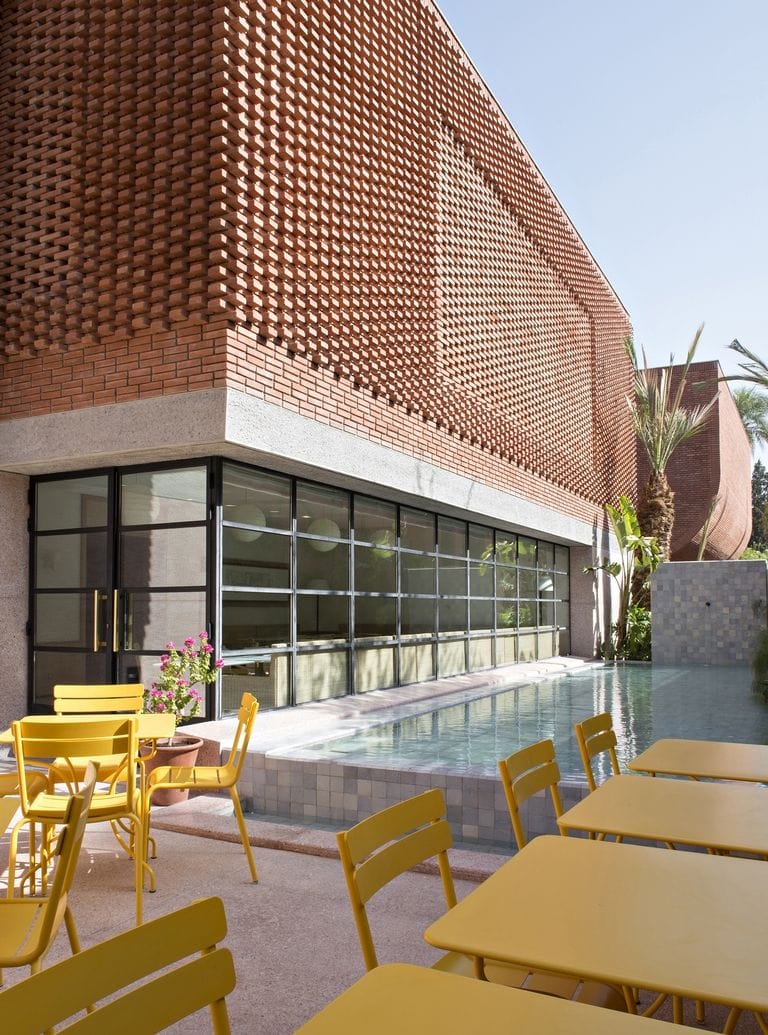
Nicolas Mathéus

Nicolas Mathéus
Marrakech-inspired pieces are shown in the permanent exhibition, which shows 50 of Saint Laurent’s most iconic looks on mannequins, from his safari jackets to his Russian collection from 1976 to his Romanian blouse from 1981, which pays homage to a famous painting by Henri Matisse. “He had such a gift for combining inspiration from traditional costumes he never saw with his own eyes,” says Dahlström. “He said he was an armchair traveller.”
Saint Laurent’s famous quotes are projected on the walls behind the mannequins. “Good clothing is a passport to happiness,” one says. Old video footage from runway shows plays to a soundtrack of the Rolling Stones, opera classics and press interview audio clips where Saint Laurent muses on fashion. “Over the years I have learned that what is important in a dress is the woman who is wearing it,” he says in one clip.
The museum has a room devoted to photography, which shows a series of Saint Laurent’s muse, French actress Catherine Deneuve, shot by German fashion photographer Andre Rau in 1992. “She is photographed in Saint Laurent’s clothing and in Marrakech, so it made sense to open the museum with this series,” explains Dahlström. “It’s very special.”
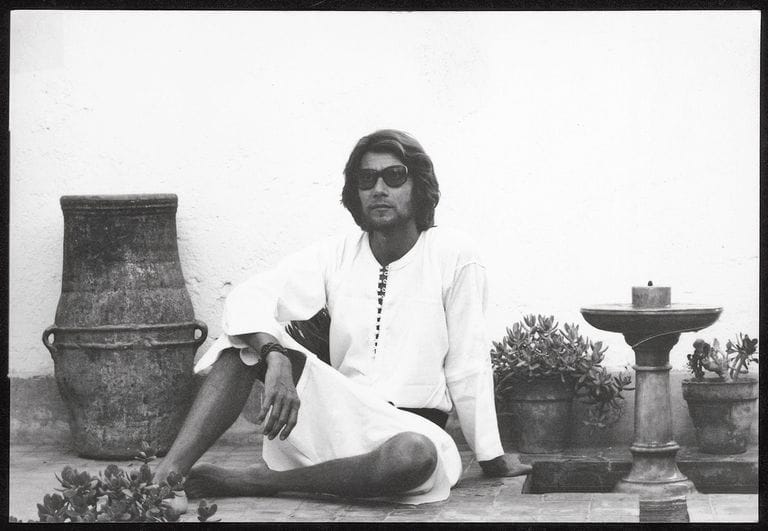
YSL at Dar el Hanch.
Musée Yves Saint Laurent
But it’s not all about Yves. There is a gallery for showcasing young artists and designers; Marrakech designer Noureddine Amir opens a solo show on February 23, and currently, you can find 40 landscape paintings of Morocco by Jacques Majorelle, the artist who owned the blue villa and garden before Saint Laurent bought in the 1960s.
For those who want a deeper look into Saint Laurent’s Marrakech life, the Four Seasons Marrakech is hosting rare tours of his private home, the Villa Oasis, by appointment only through the concierge. A visit to the villa is $1,700 for a tour of eight people, which goes towards the Majorelle Foundation.
But the museum is a kind of home, too, at least for Saint Laurent’s vision as a fashion designer. “The goal is to show what Saint Laurent brought to fashion; he would come here two weeks a year to design his collections,” says Dahlström. “Paris was his place of creation but Marrakech was his place of inspiration.”
From: Harper’s BAZAAR US


